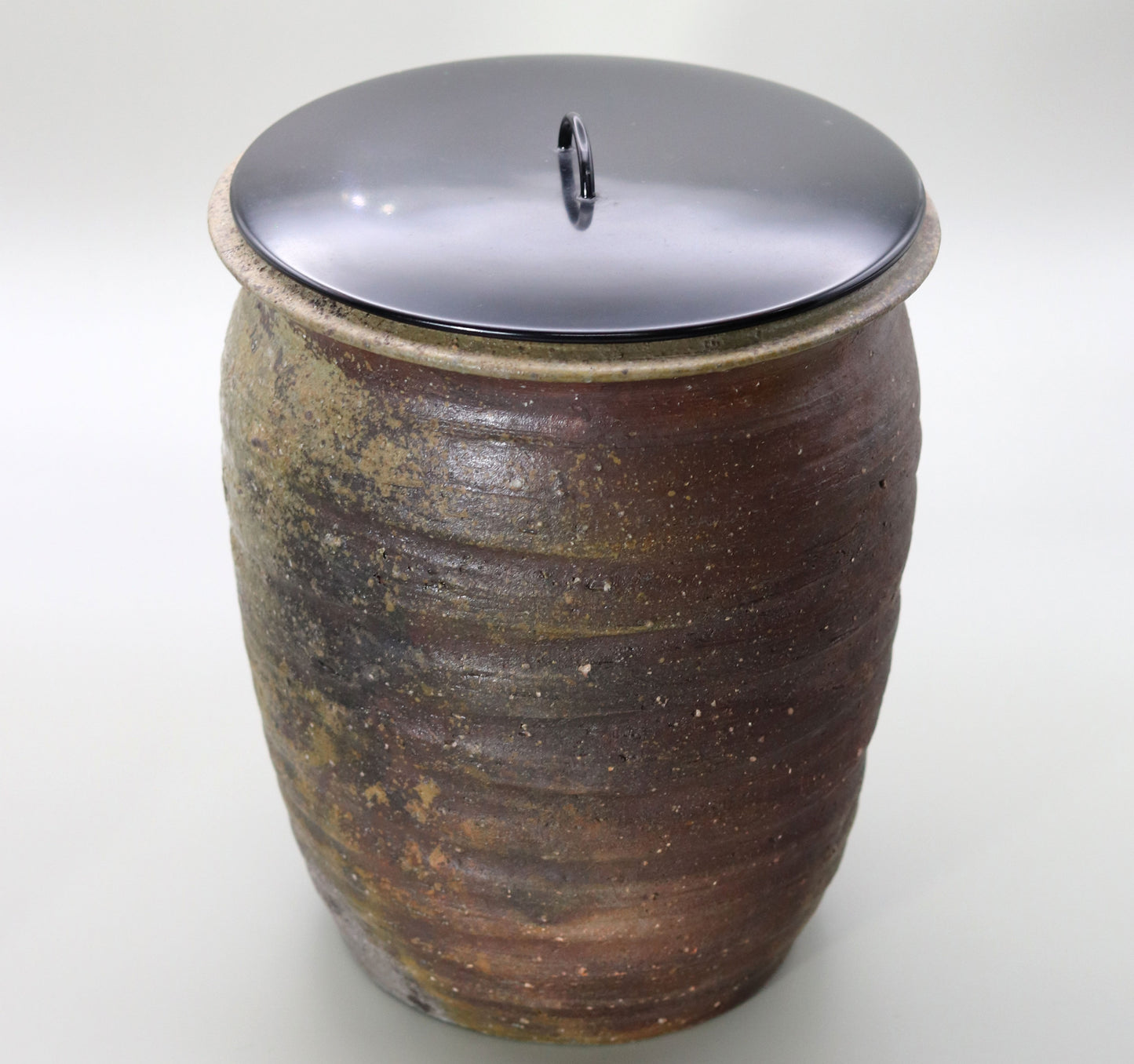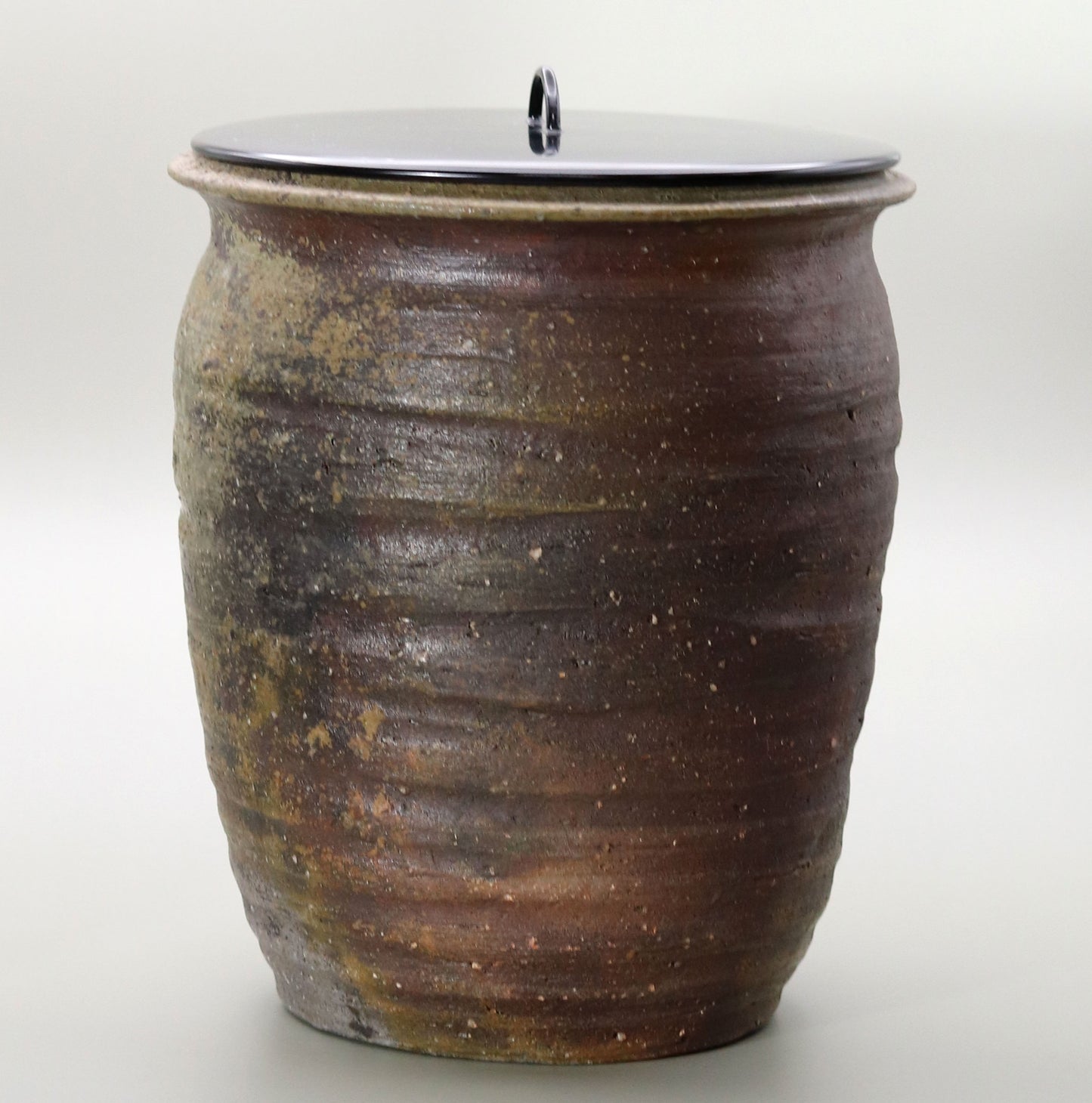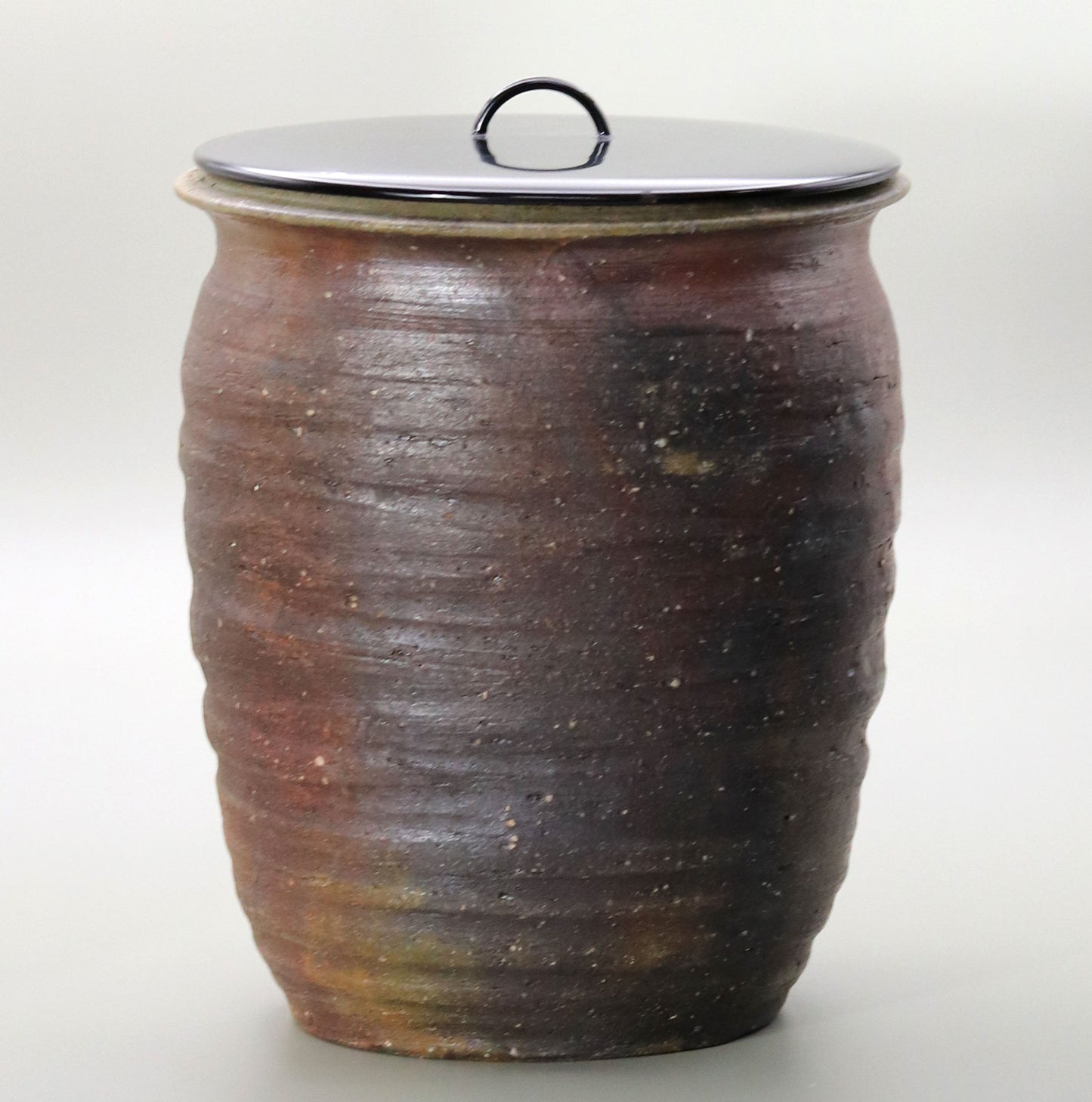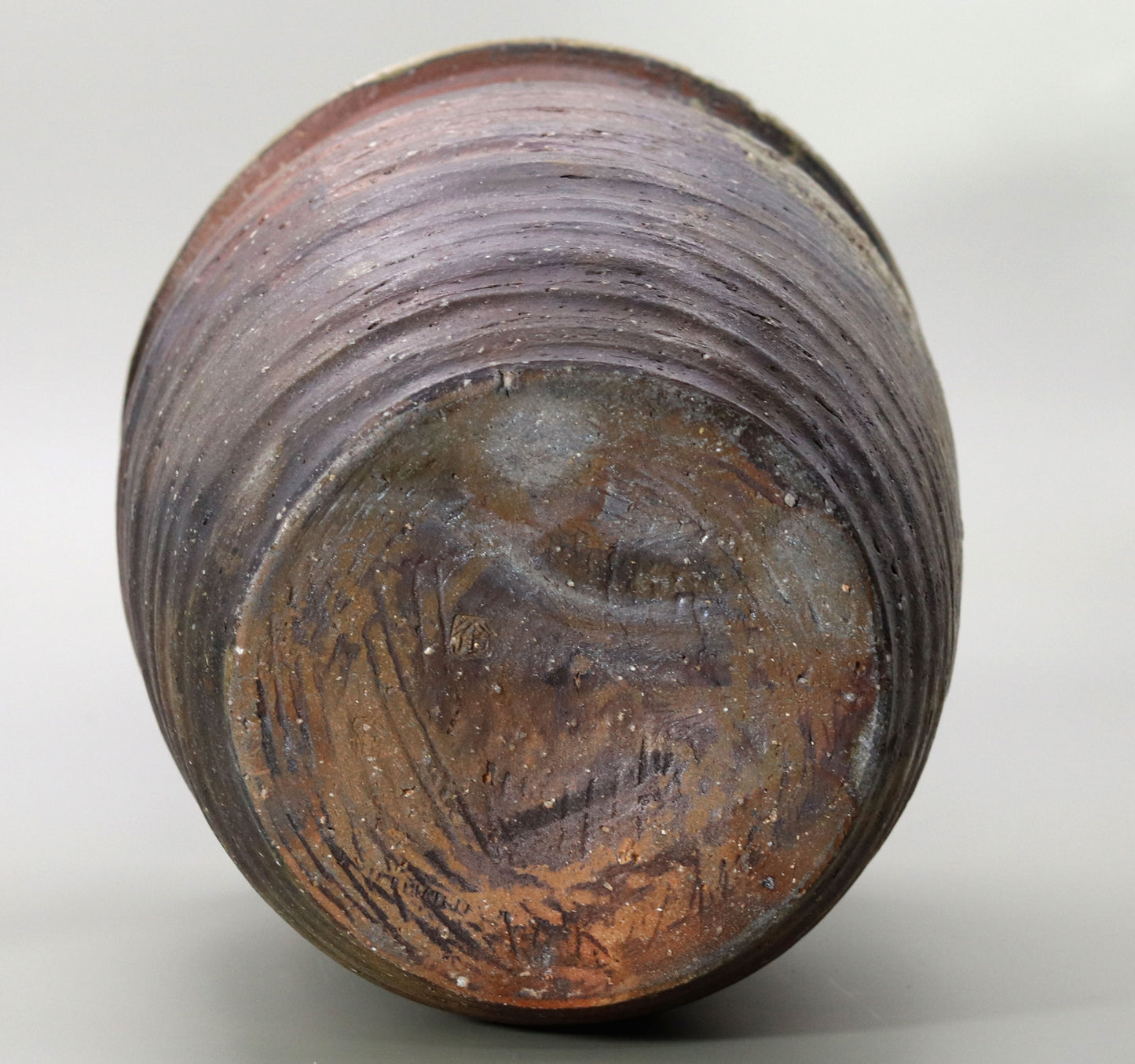美 風 道 響 夢 Tanba kiln-fired potato head water jar by Naosaku
美 風 道 響 夢 Tanba kiln-fired potato head water jar by Naosaku
Couldn't load pickup availability
Tanba kiln-transformed potato-head water jar - by Masamoto Naosaku
Height 23.0 cm x maximum diameter 18.2 cm
1. The potato head shape exudes friendliness and elegance
The plump body reminiscent of a taro root and the narrow mouth create a gentle form unique to the taro-head water jar, bringing a calm atmosphere to the tea ceremony. The balance between the rounded shoulders that suppress tension and the stable buttocks that are firm is exquisite, giving it a dignified presence that is contrary to its cute appearance.
2. The beauty of kiln transformation created by flames
This piece is made without any glaze, and is fired in a climbing kiln using the Yakishime technique, in which red pine firewood is burned for more than three days and nights. The flames and ash affect the surface of the piece in a way that causes purple-brown, dark brown, and moss green to blend together, and silvery crystals to sparkle like frost here and there. These scenes are one of a kind, born out of a coincidence of the position in the kiln, the way the ash falls, and the temperature changes of the flames.
3. The lineage of Nanban copies
The Imogashira Mizujar is said to be a copy of a Nanban-yaki jar beloved by tea masters in the Momoyama period. The simple form that makes use of the earthenware and the strong, yakishime surface are designs that are highly compatible with the tea ceremony, so much so that an ancient book states that "it is cherished by connoisseurs." Masamoto Naosaku has inherited that spirit, and is reviving the style that could be called "Japanese Nanban" in the present day, using rough clay from Tanba and firing in a wood-fired kiln.
4. The capacity to reflect the four seasons
Spring/Autumn : Combined with a pale pink camellia cover or a magnolia leaf cover, the warm earthy tones gently bring in the colors of the season.
Summer : When you place the included Tamenuri lid on, the cool black lacquer and the luster of the kiln firing blend together for a refreshing feel.
Winter : The silver-gray color of the ash covering harmonizes with the scenery around the hearth, further enhancing the sense of wabi.
5. Detailed design that supports the beauty of utility
The rim is thinly beveled, making it smooth to handle with a ladle. The gentle wheel marks on the body provide a stable grip, and the inside is tightly fired to prevent water absorption, making it durable enough for practical use at tea ceremonies.
6. Care and care
Before use, rinse lightly with water to moisten the surface.
After use, rinse with lukewarm water, wipe dry with a soft cloth and dry in the shade.
Please avoid using detergents or soaking in water for long periods of time, and be careful not to prevent the enamel from breathing.
The rough clay nurtured by the Tanba earth and the scenery of kiln changes accidentally created by the flames - the Tanba Kiln Change Imogashira Mizujar by Masamoto Naosaku is a masterpiece of tea ceremony utensils where tradition and innovation blend together. Please treasure it for a long time by changing the lid and accessories with each season, and enjoy the taste of wabi that deepens with the years.
Share









Multi-Column
-
[I will send it to you quickly and carefully]
We carefully package each product in a way that suits it best.
Also, delivery times vary depending on the piece (vessel, etc.).
Items that already come with a box will be shipped within 1-3 days of the order date.
For items that require a box to be made after your order, it will take approximately 30 days for production to be completed and then shipped.
In either case, once we have confirmed your order, we will contact you by email to inform you of the delivery date.
-
[Requests when purchasing pottery]
Even products that look the same may differ slightly in color, shape, size, etc.
The way the glaze is used, the power of the kiln, the firing method, the season, and the humidity also affect the appearance of the pottery.
Please understand the individuality of each piece of pottery and enjoy the unique warmth of handmade.









